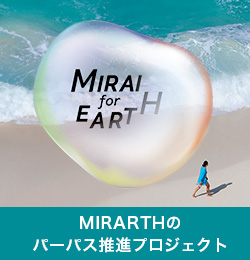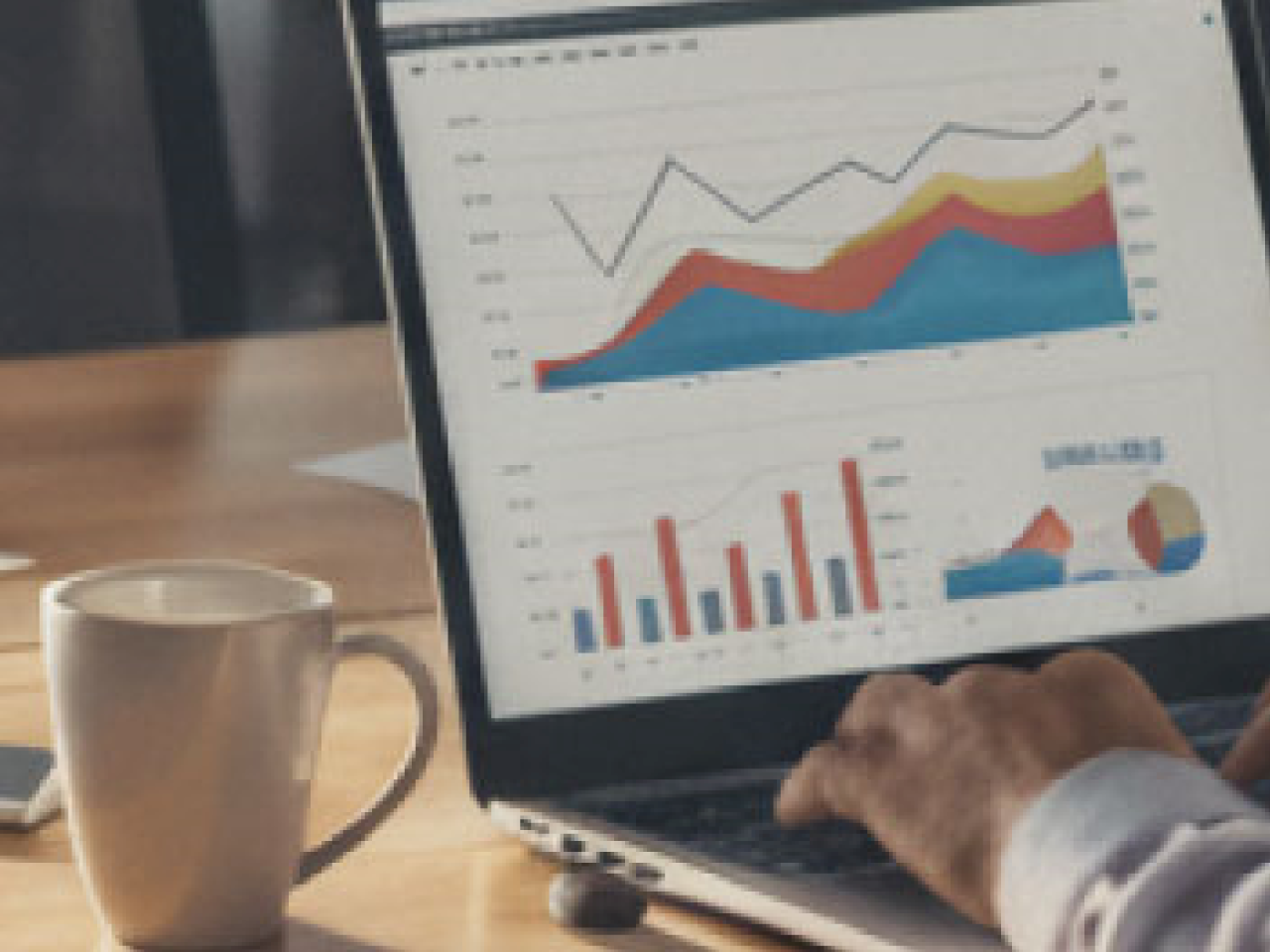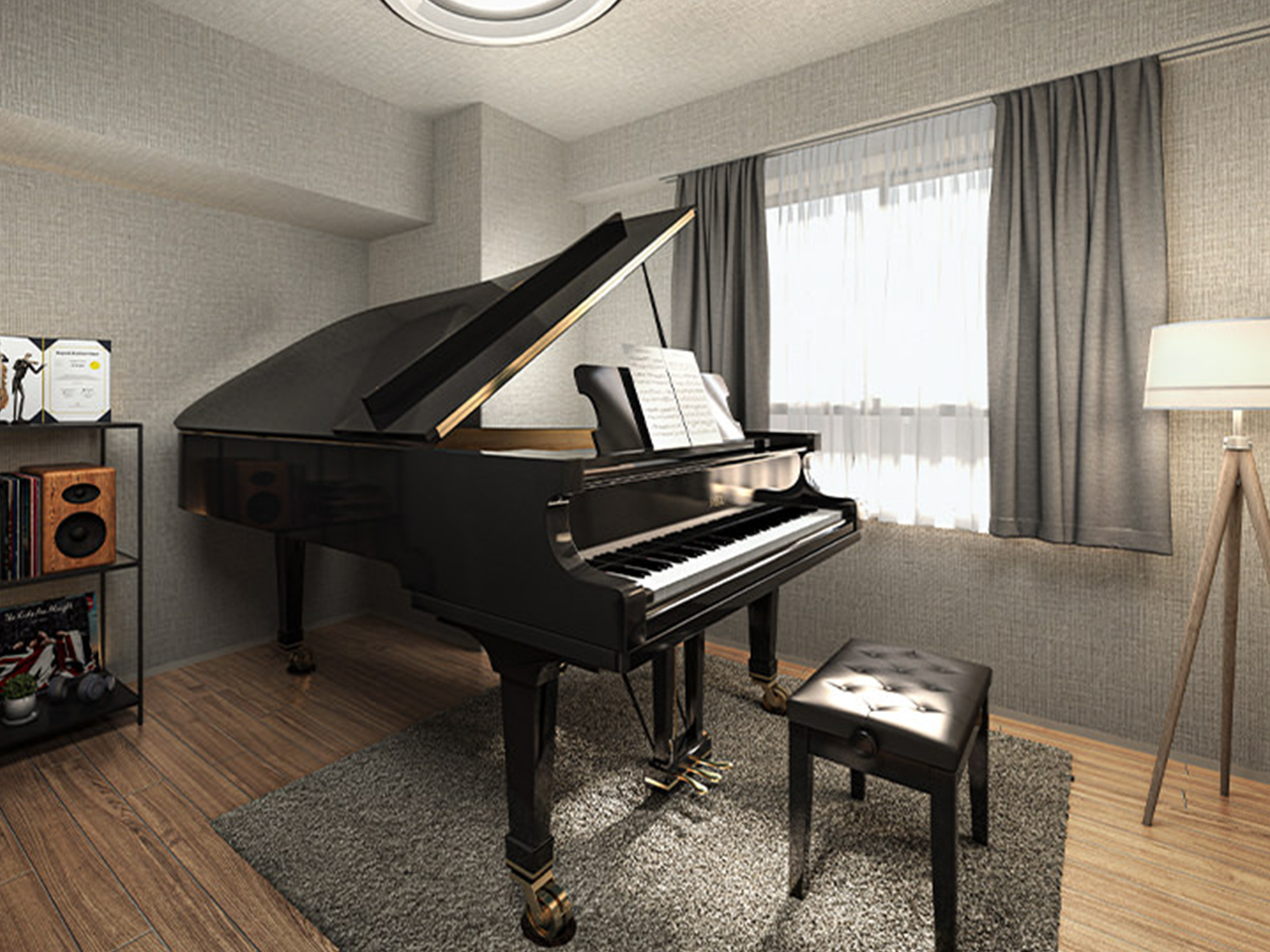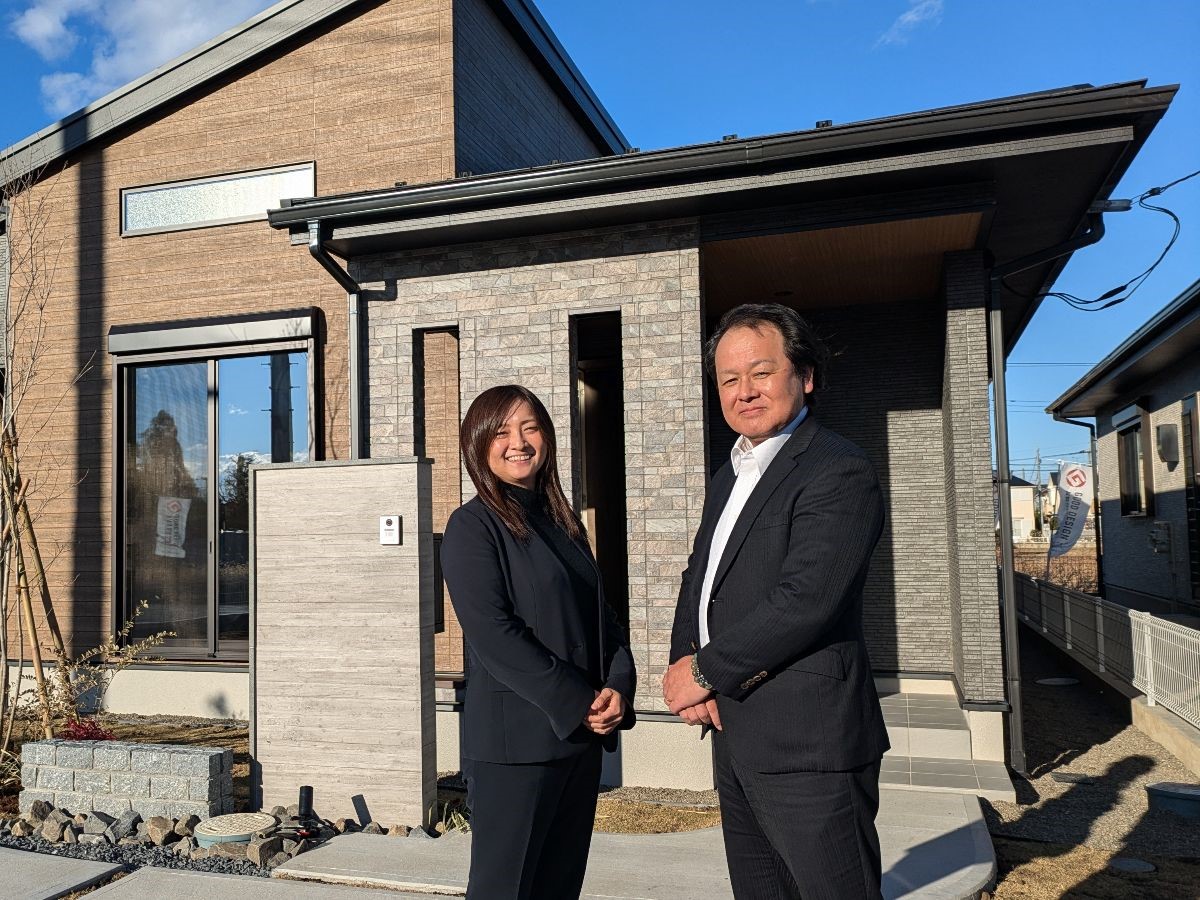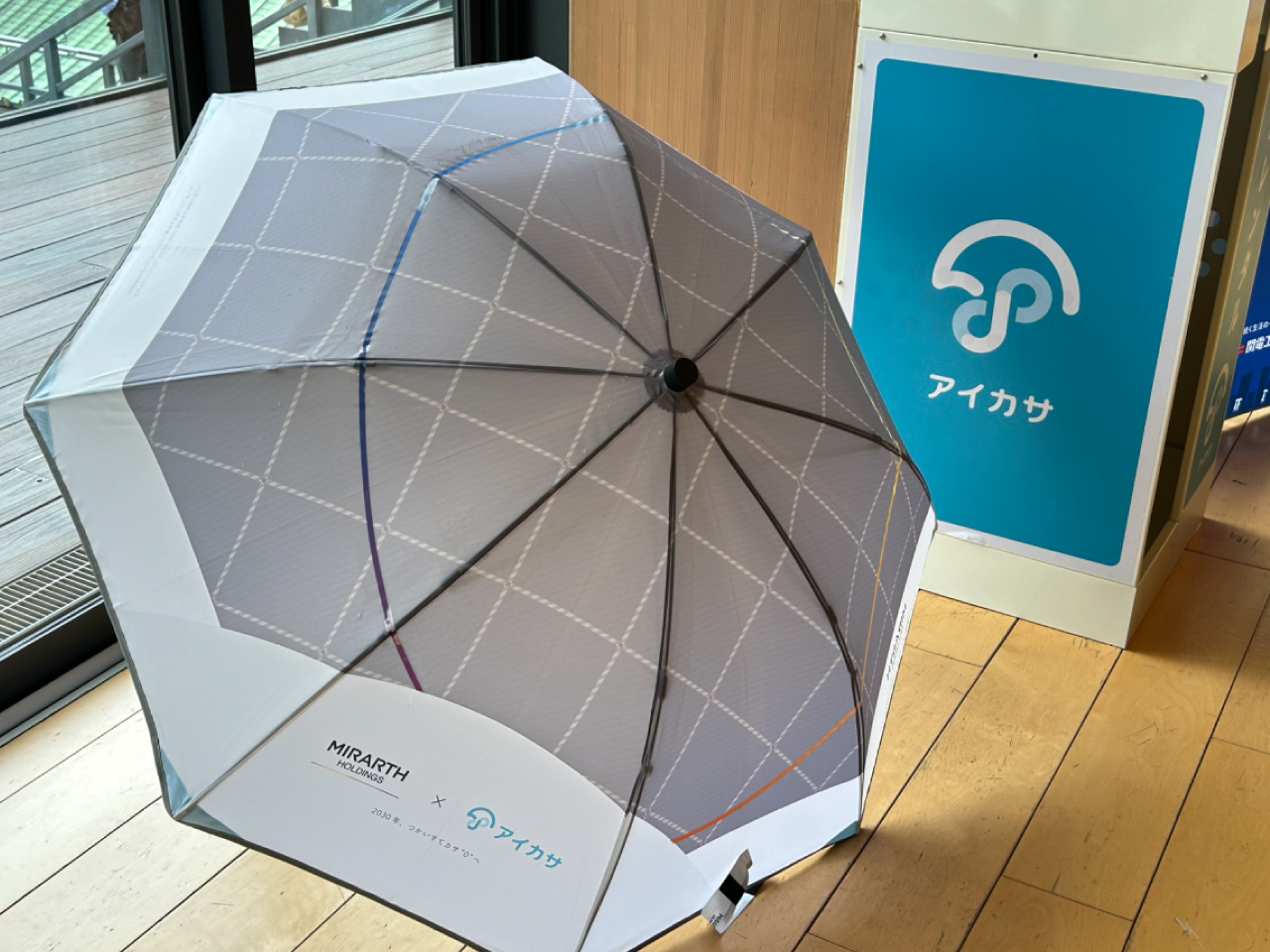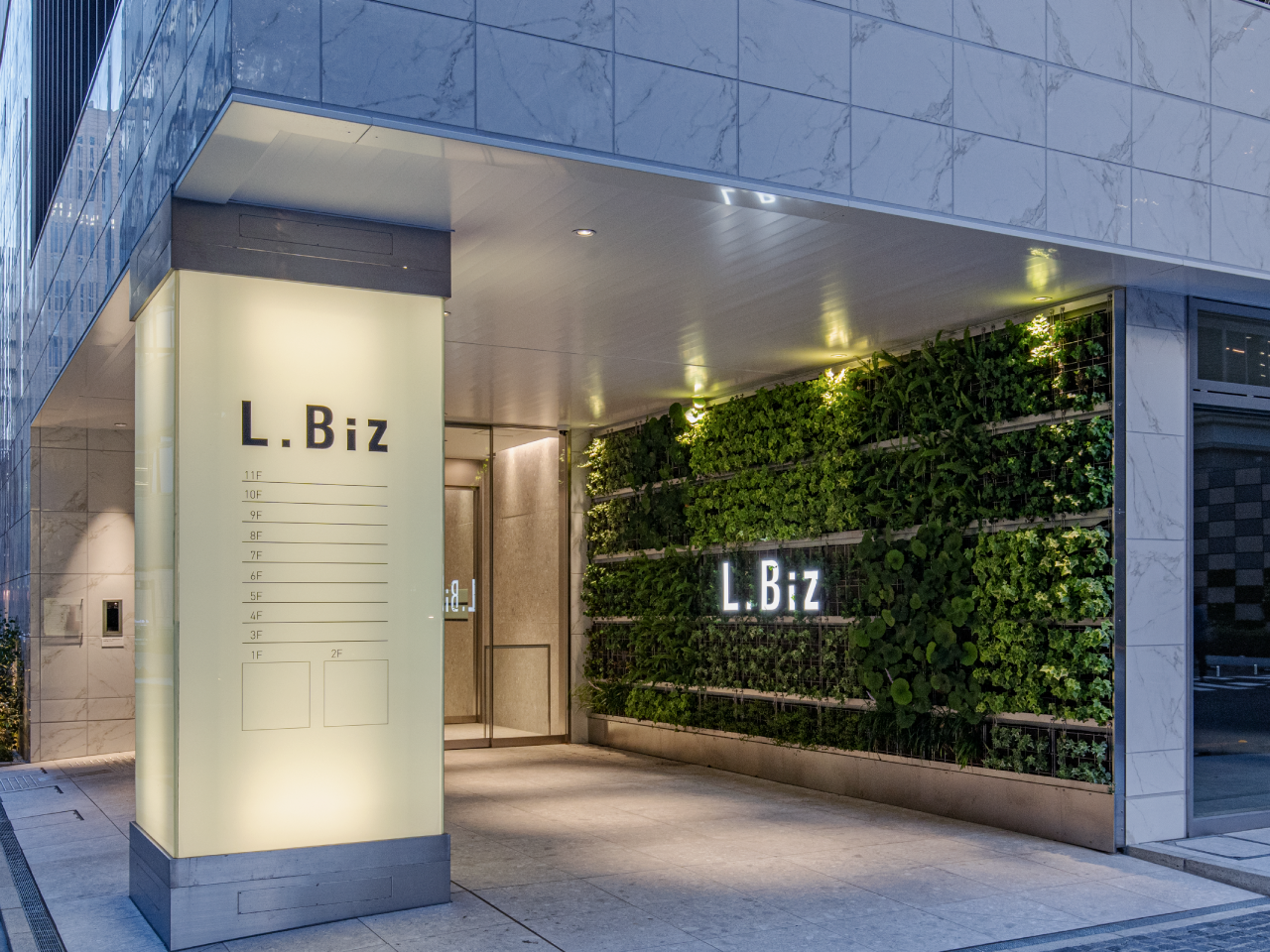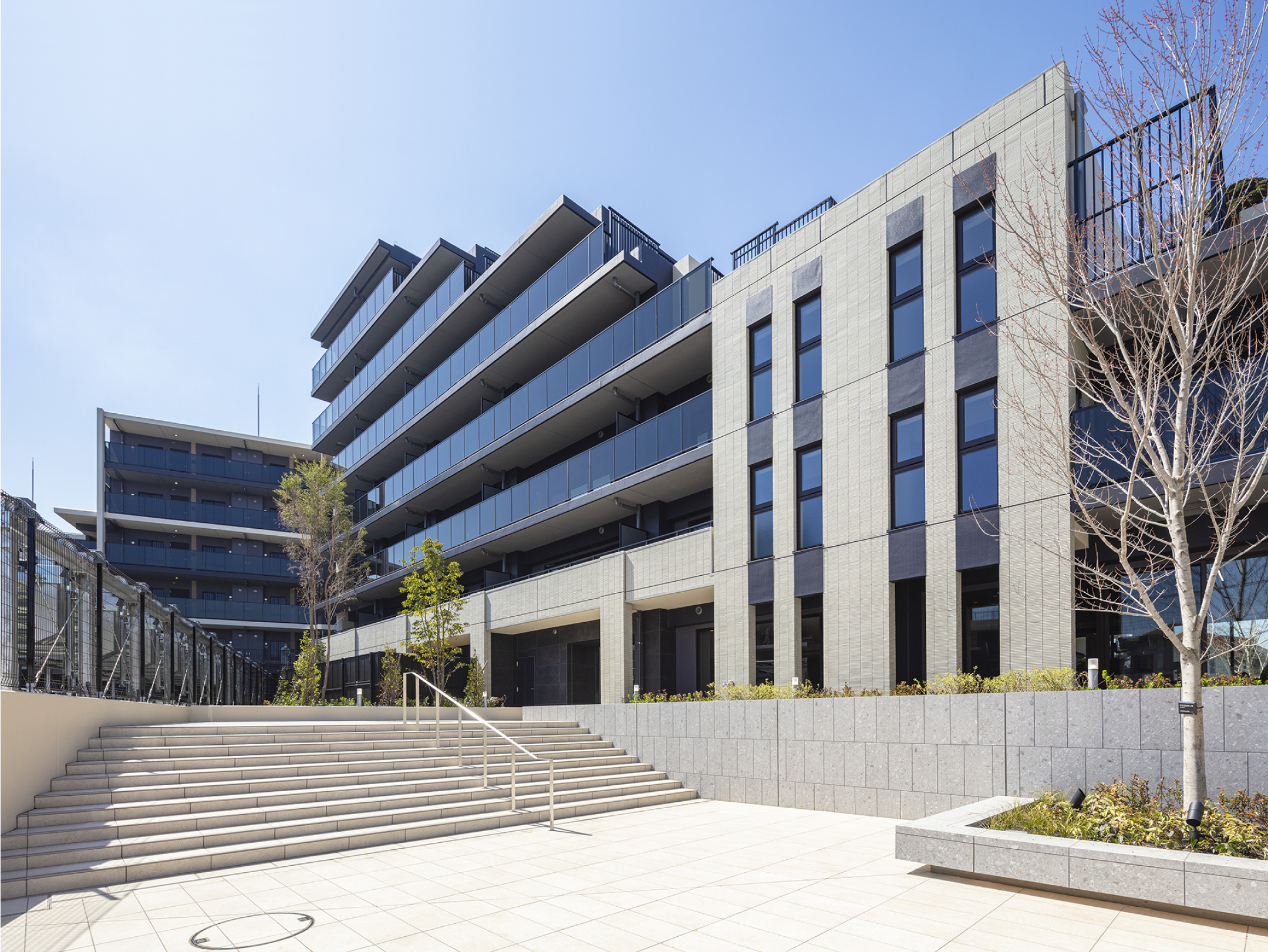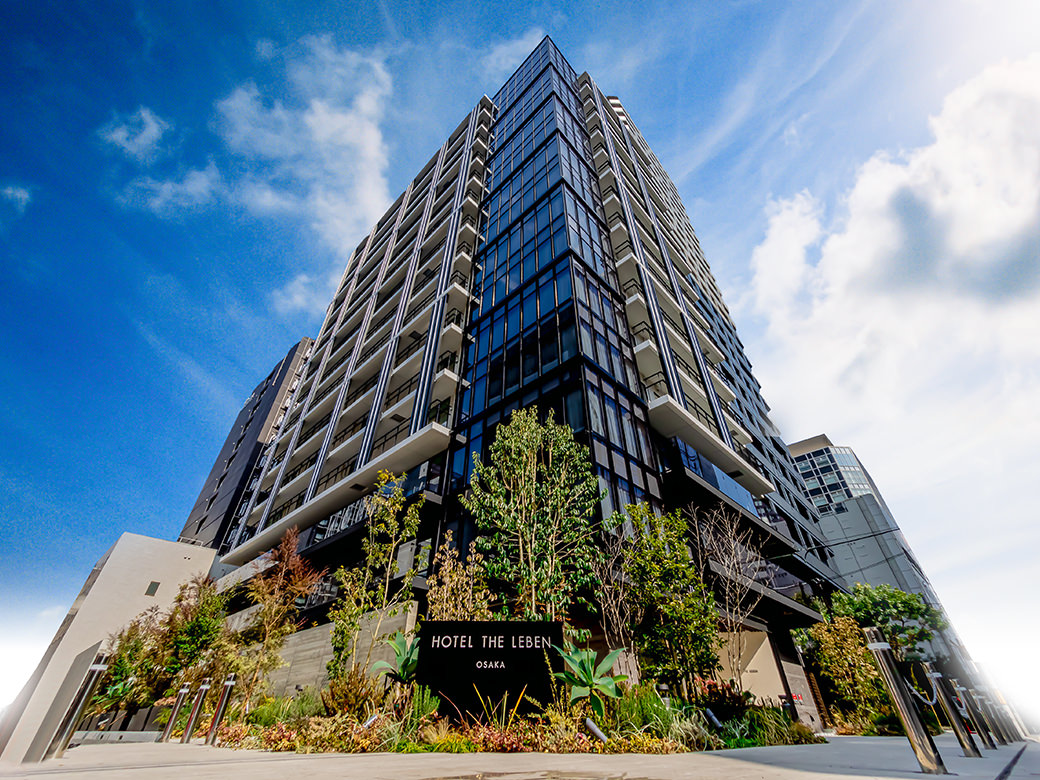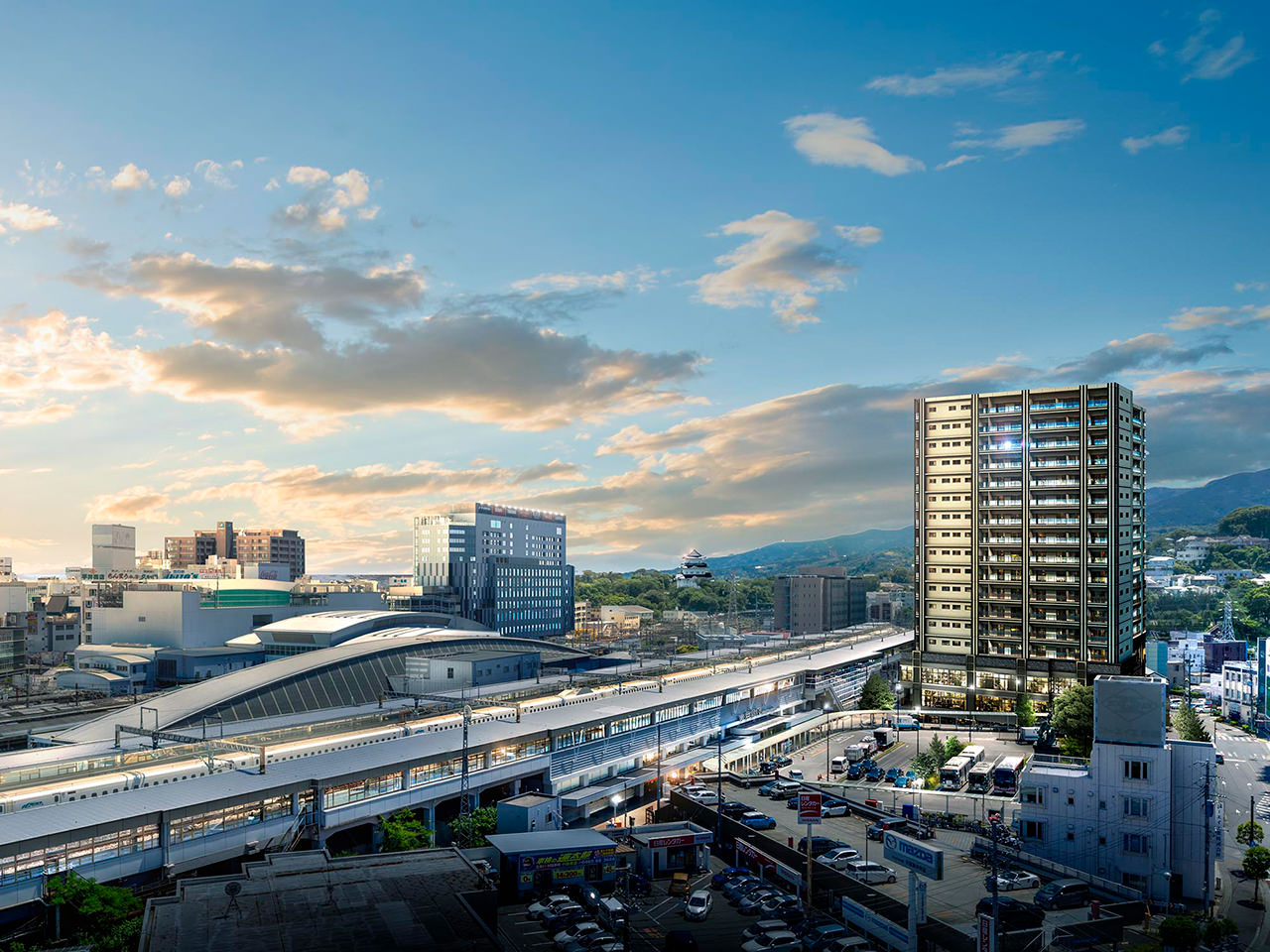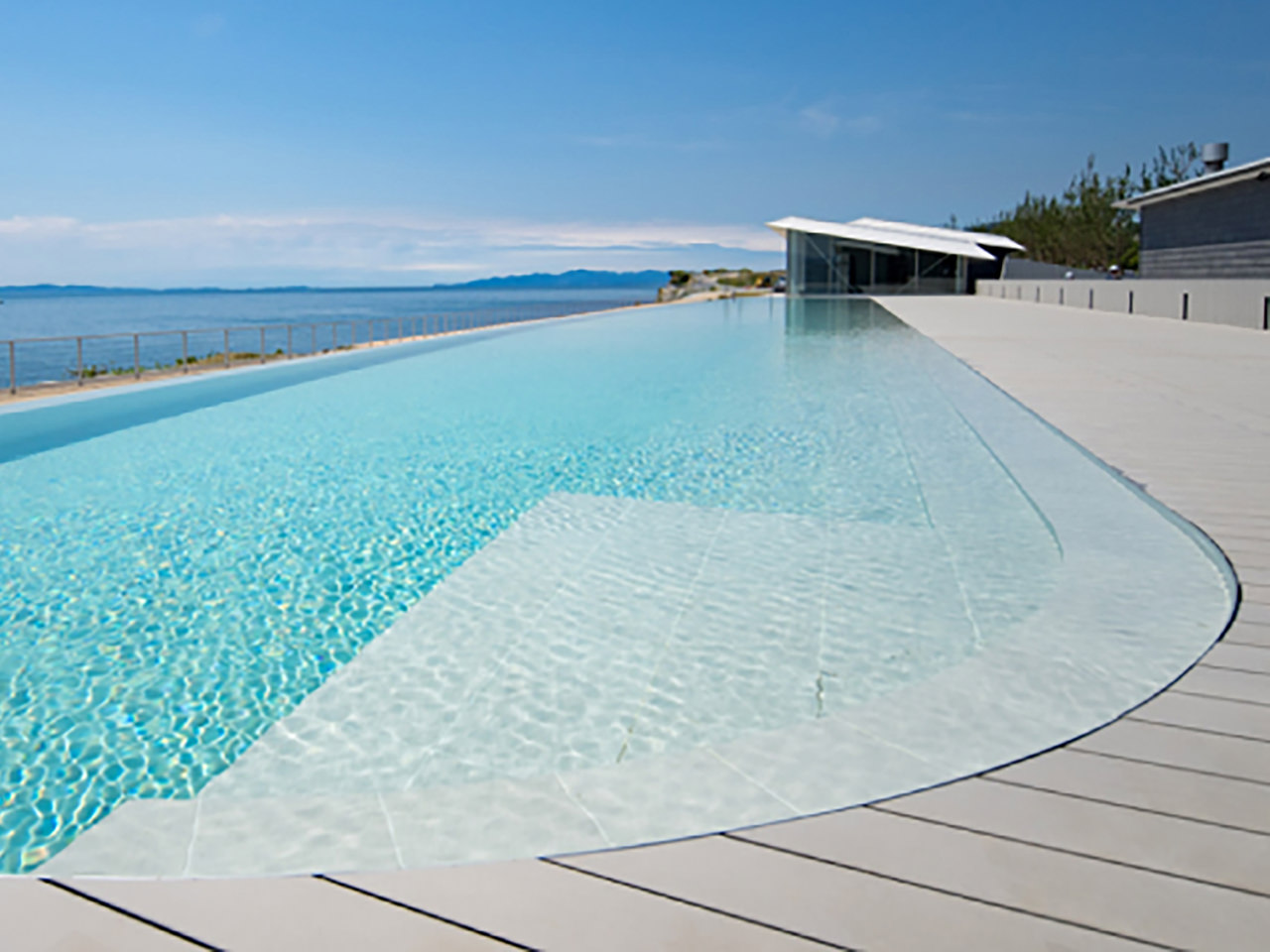5
2024.3.12
Real Estate
#Real estate#City development#Environment
Our first "ZEH apartment" is in Nagano Prefecture. Achieve an eco-friendly lifestyle while living comfortably.

Messenger
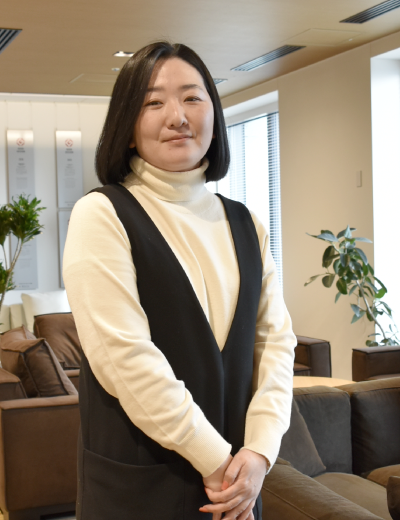
K.S.
- Company / Department
- Takara Leben Co., Ltd.
Product Planning Section, Product Planning Department, Tokyo Office, Capital Area & Cubu Branch, Condominium Business Headquarters
Project
Could you please give us an overview of the "ZEH-M oriented" concept, which was adopted for the first time in our condominiums?
 "ZEH-M oriented" is an initiative for energy-saving apartment buildings that aims to reduce the building's energy consumption to virtually zero. It is commonly known as "ZEH." The "ZEH" project, introduced for the first time by our company in "LEBEN NAGANO NAKAGOSHO THE PEERLESS," aims to reduce primary energy consumption by more than 20% throughout the entire apartment building, including common areas, while maintaining a comfortable indoor environment by improving the insulation performance of the home and introducing highly efficient equipment and systems, thereby achieving a virtually "zero" annual primary energy balance.
"ZEH-M oriented" is an initiative for energy-saving apartment buildings that aims to reduce the building's energy consumption to virtually zero. It is commonly known as "ZEH." The "ZEH" project, introduced for the first time by our company in "LEBEN NAGANO NAKAGOSHO THE PEERLESS," aims to reduce primary energy consumption by more than 20% throughout the entire apartment building, including common areas, while maintaining a comfortable indoor environment by improving the insulation performance of the home and introducing highly efficient equipment and systems, thereby achieving a virtually "zero" annual primary energy balance.
The project was selected for the "Net Zero Energy House Support Project" run by the Ministry of Economy, Trade and Industry and the Ministry of the Environment in fiscal 2020 (Reiwa 2), and started as a subsidized project. With the cooperation of power companies and electrical manufacturers, the project was able to reduce the energy consumption of the residential building by 29%, and was selected as a subsidized project.
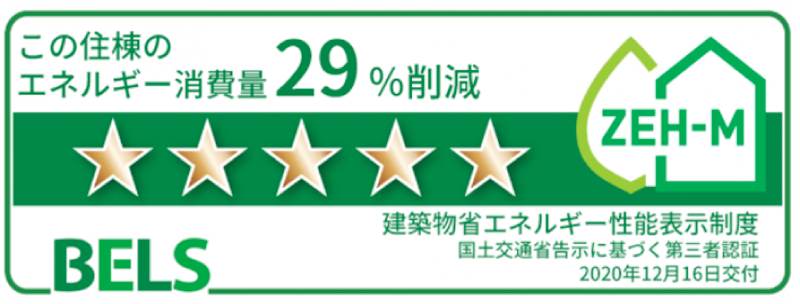
What prompted you to adopt "ZEH-M-Oriented" for "LEBEN NAGANO NAKAGOSHO THE PEERLESS"?
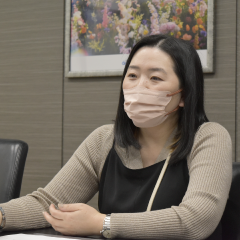 The "Fourth Energy Plan" launched nationwide by the Ministry of Economy, Trade and Industry in 2014 includes a national policy goal of "achieving the average of all newly built homes to be ZEHs by 2030." With the aim of expanding the use of ZEHs, a national subsidy system was established in 2018.
The "Fourth Energy Plan" launched nationwide by the Ministry of Economy, Trade and Industry in 2014 includes a national policy goal of "achieving the average of all newly built homes to be ZEHs by 2030." With the aim of expanding the use of ZEHs, a national subsidy system was established in 2018.
As our company also promotes the SDGs, we believe that it is essential to take measures to reduce CO2 emissions in Japan's future homes, and we were considering introducing this system. As for the target property, Shinshu is a snowy region with particularly high energy consumption, so there was a large potential for reduction, making it the ideal property to introduce the system, and we decided to introduce it.
What points did you pay particular attention to when designing the "ZEH"?
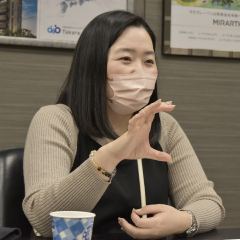 This ZEH apartment uses an all-electric system with centralized power supply, and the operation of the EcoCute is remotely controlled in groups to suppress peak power usage. By incorporating AI (artificial intelligence) into the apartment's EcoCute, it learns the times of the residents' power usage and suppresses peak power usage. In addition, the electricity used is certified non-fossil energy by the power company, so CO2-free electricity derived from renewable energy is used, making this an apartment that is not only friendly to utility bills but also to the environment.
This ZEH apartment uses an all-electric system with centralized power supply, and the operation of the EcoCute is remotely controlled in groups to suppress peak power usage. By incorporating AI (artificial intelligence) into the apartment's EcoCute, it learns the times of the residents' power usage and suppresses peak power usage. In addition, the electricity used is certified non-fossil energy by the power company, so CO2-free electricity derived from renewable energy is used, making this an apartment that is not only friendly to utility bills but also to the environment.
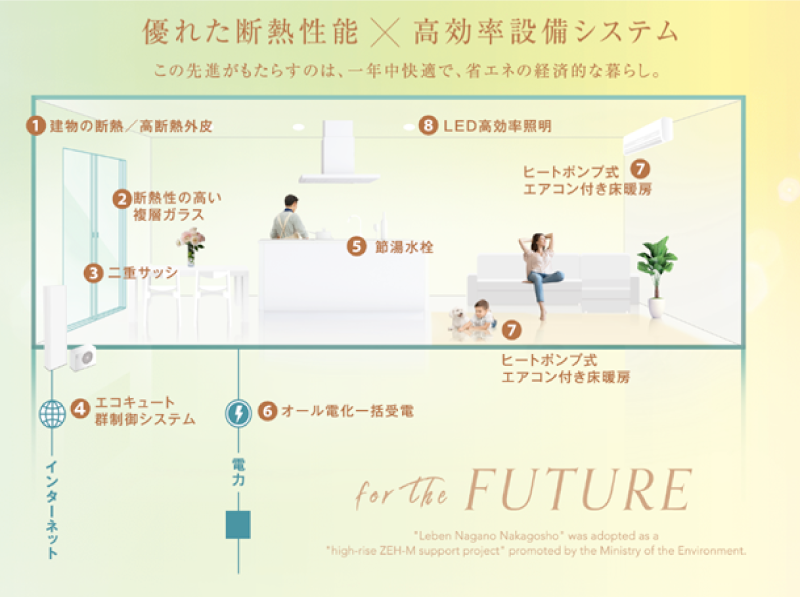
Points
What were the outcomes achieved through the project design?
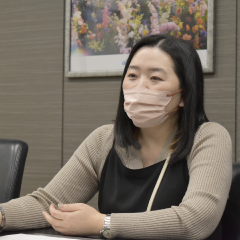 I think I learned a lot about "ZEH".
I think I learned a lot about "ZEH".
For example, I deepened my knowledge by interviewing companies that had applied the previous year and attending seminars. I also researched in advance about applying for "ZEH" subsidies, such as how to submit application documents to the government.
In addition, there were many restrictions on selling the condominiums because it was a subsidized project. We made sure the sales team understood this and explained the project to each customer, what "ZEH" is, and what it means to receive subsidies. We also explained it to the members of the business department so that they would understand, and had them reflect it in the important matters explanation document. I think everyone involved studied "ZEH" and was on the same page with the intention of making the project a success. I think this is the result of a lot of teamwork and unity.
What challenges did you face in carrying out this project?
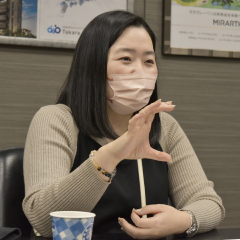 There are too many...lol.
There are too many...lol.
First of all, we had no know-how about ZEH itself, so we had to research and study from scratch. Also, a subsidy system was launched in 2018 as a national policy, but it seems that the government also had a lot to understand about ZEH, and we were asked to submit a huge amount of documents. We repeatedly recalculated the numbers, prepared the required documents, submitted them by the deadline, and corrected any points that were pointed out. The documents to be submitted exceeded 200 pages, and we were reminded of the seriousness of the situation. Then, in 2020, the spread of the new coronavirus put the brakes on our business. The impact was great as it is a business that involves the government, many contractors, consultants, construction companies, and sales teams.
What do you think were the factors that led to your grant application being successfully accepted?
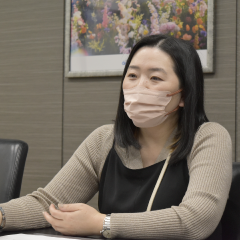 Once the budget for a government subsidy program is exhausted, you will no longer be eligible to apply. After consulting with our consulting team, we decided to submit our application as soon as applications open to make an impact. We also focused on the fact that no other applications had been submitted, as no all-electric homes had been selected in the past. In particular, we presented our smart meter measurement method to the government to gain their understanding, as this was the first time we had used it. As a result, we contributed to increasing the options for ZEH-certified solutions in the ZEH industry.
Once the budget for a government subsidy program is exhausted, you will no longer be eligible to apply. After consulting with our consulting team, we decided to submit our application as soon as applications open to make an impact. We also focused on the fact that no other applications had been submitted, as no all-electric homes had been selected in the past. In particular, we presented our smart meter measurement method to the government to gain their understanding, as this was the first time we had used it. As a result, we contributed to increasing the options for ZEH-certified solutions in the ZEH industry.
After a lot of drama, we were successful and were approved for the subsidy, but the key was to solidify the product plan in order to submit documents that would allow the advantages of the property plan to be understood. We worked with a consulting team, but even a professional consulting team couldn't tell if the application would be approved. We were nervous until the results were known. Therefore, the team was especially happy when the application was approved.
What thoughts and attitudes have you kept in mind when carrying out this project?
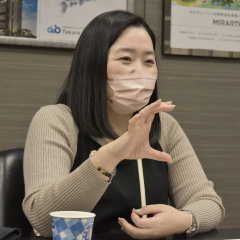 I believe my mission is to "provide customers with a comfortable lifestyle." Therefore, I would like to attend previews of apartments, listen to customers' real opinions, and reflect them in the product as much as possible. There are many customers who want to live an eco-friendly life, but an eco-friendly lifestyle that requires patience while living a normal life is not sustainable. The ZEH apartment "LEBEN NAGANO NAKAGOSHO THE PEERLESS" project was realized from the desire to "achieve a lifestyle that does not produce carbon dioxide through facilities and solutions." "You can live an eco-friendly life while also living a comfortable life." I think it has become a wonderful apartment for customers.
I believe my mission is to "provide customers with a comfortable lifestyle." Therefore, I would like to attend previews of apartments, listen to customers' real opinions, and reflect them in the product as much as possible. There are many customers who want to live an eco-friendly life, but an eco-friendly lifestyle that requires patience while living a normal life is not sustainable. The ZEH apartment "LEBEN NAGANO NAKAGOSHO THE PEERLESS" project was realized from the desire to "achieve a lifestyle that does not produce carbon dioxide through facilities and solutions." "You can live an eco-friendly life while also living a comfortable life." I think it has become a wonderful apartment for customers.
"To design sustainable environments for a happier future for both people and our planet." What does this mean?
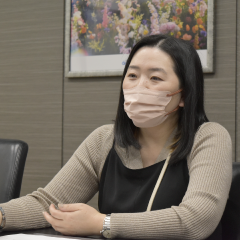 Humans inevitably use energy and produce CO2 in order to live. However, by improving the insulation performance of our homes and using energy-efficient equipment to conserve energy, we can achieve a lifestyle that is considerate of the burden on the environment.
Humans inevitably use energy and produce CO2 in order to live. However, by improving the insulation performance of our homes and using energy-efficient equipment to conserve energy, we can achieve a lifestyle that is considerate of the burden on the environment.
Our work can provide ways for people to relate to the environment through housing. We believe that our ideas for housing can help people live comfortable lives and coexist with the earth.
